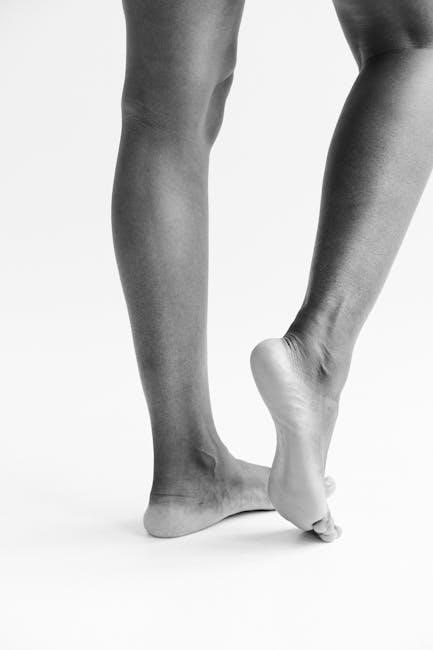Welcome to the Canon EOS 1D Mark II manual, your comprehensive guide to unlocking the full potential of this professional-grade camera. Designed for advanced photographers, this manual provides detailed instructions and insights to help you master its features, ensuring optimal performance and exceptional image quality in every shot.
Overview of the Camera and Manual
The Canon EOS 1D Mark II is a professional-grade DSLR camera featuring an 8.2-megapixel CMOS sensor, designed for high-speed and high-resolution photography. The manual provides a detailed guide to understanding and utilizing the camera’s advanced features, including its autofocus system, metering modes, and ISO range. It also covers setup, customization, and maintenance, ensuring users can maximize the camera’s capabilities. The manual is available as a downloadable PDF, offering comprehensive instructions for both novice and experienced photographers.
Importance of the Manual for Optimal Use
The Canon EOS 1D Mark II manual is essential for unlocking the camera’s full potential, providing detailed insights into its advanced features and settings. It guides users through optimal configuration, troubleshooting, and customization, ensuring professional-grade results. Whether for beginners or experienced photographers, the manual is a vital resource to understand and master the camera’s capabilities, enabling precise control over every aspect of photography for exceptional outcomes.

Key Features of the Canon EOS 1D Mark II
The Canon EOS 1D Mark II features an 8.2MP CMOS sensor, DIGIC II processor, durable weather-sealed design, and fast shooting capabilities, ideal for professional photography.
8.2 Megapixel CMOS Sensor
The Canon EOS 1D Mark II is equipped with an 8.2-megapixel CMOS sensor, delivering high-resolution images with exceptional clarity and detail. This sensor ensures precise color reproduction and low noise levels, making it ideal for professional photography. Its large pixel size enhances light capture, providing superior performance in various lighting conditions. The sensor’s advanced technology supports the camera’s rapid shooting capabilities, ensuring sharp and vibrant images every time. This feature is a cornerstone of the camera’s ability to produce outstanding results for photographers.
Advanced Autofocus System
The Canon EOS 1D Mark II features an advanced autofocus system designed for precision and speed. With 45 AF points, it offers high-precision focusing, ensuring sharp images even in dynamic situations. The system supports AI Servo AF mode, enabling continuous tracking of moving subjects. This technology is complemented by customizable AF settings, allowing photographers to adapt to various shooting scenarios. Whether capturing fast-paced action or precise portraits, the autofocus system delivers reliable performance, making it a standout feature for professional photographers seeking accuracy and efficiency in their work.
ISO Range and Noise Performance
The Canon EOS 1D Mark II offers an impressive ISO range of 100 to 3200, delivering flexibility for various lighting conditions. It excels in low-light environments, producing images with minimal noise even at higher ISO settings. The camera’s advanced noise reduction system ensures smooth and detailed results, particularly at ISO 400 and 800. This capability makes it ideal for professional photographers who require high-quality images in challenging lighting scenarios, without compromising on clarity or detail.
Burst Mode and Shooting Speed
The Canon EOS 1D Mark II offers an impressive burst mode, capturing up to 8.5 frames per second (fps) in continuous shooting. This feature is ideal for sports, wildlife, and action photography, allowing photographers to freeze fast-moving subjects with precision. The camera’s buffer can handle up to 20 RAW images or 30 JPEGs in a single burst, ensuring uninterrupted shooting during critical moments. This high-speed capability makes it a reliable tool for professionals needing to capture decisive moments with exceptional accuracy and speed.

How to Use the Canon EOS 1D Mark II Manual
Mastering the Canon EOS 1D Mark II begins with understanding its manual. This comprehensive guide covers camera functions, settings, and troubleshooting, ensuring photographers can optimize their shooting experience. Use the index to locate specific features and refer to detailed explanations for advanced modes. By thoroughly exploring the manual, users can unlock the camera’s full potential and achieve professional-grade results in every shot.
Navigating the Manual Effectively
To navigate the Canon EOS 1D Mark II manual effectively, start by familiarizing yourself with its structure. Use the table of contents to quickly locate specific topics, such as camera settings or shooting modes. The manual is divided into clear sections, making it easy to find information on autofocus, metering, and image quality. Pay attention to troubleshooting guides and firmware update instructions to resolve common issues. For advanced users, detailed technical specifications and customization options are also included. Consulting the manual regularly ensures you maximize the camera’s capabilities and improve your photography skills. Additionally, online resources and Canon support forums offer supplementary guides and updates to enhance your understanding. By systematically exploring the manual, you can unlock the full potential of your Canon EOS 1D Mark II and capture stunning images with precision and confidence.
Understanding Firmware Updates
Firmware updates are essential for optimizing the performance of your Canon EOS 1D Mark II. These updates enhance camera functionality, fix bugs, and add new features. Regularly checking for updates ensures your camera operates at its best. Visit Canon’s official website to download the latest firmware version. Follow the manual’s instructions for installing updates, typically done via the camera’s menu or Canon software. Keeping your firmware up-to-date guarantees improved performance, compatibility, and error resolution, ensuring you capture high-quality images consistently.
Setup and Configuration
Setting up your Canon EOS 1D Mark II starts with initializing the camera and navigating through the menu to configure custom settings. Prepare your memory cards for optimal performance and storage efficiency.
Initial Setup and Camera Preparation
Start by unpacking and inspecting your Canon EOS 1D Mark II, ensuring all accessories are included. Charge the battery fully before use and insert it into the camera. Install a compatible memory card, formatting it in-camera for optimal performance. Familiarize yourself with the camera’s controls and settings. Update the firmware if necessary to ensure the latest features and improvements. Customize initial settings, such as date/time and language, to suit your preferences. This preparation ensures seamless operation and readiness for capturing high-quality images.
Customizing Buttons and Controls
Customizing buttons and controls on the Canon EOS 1D Mark II allows for personalized shooting efficiency. Assign functions like ISO, AF modes, or white balance to specific buttons for quick access. Use the Custom Functions menu to tailor settings to your workflow. This feature enhances comfort and speed, enabling you to focus on capturing moments seamlessly. Refer to the manual for detailed steps to customize your camera’s controls effectively.
Memory Card Management
Effective memory card management is crucial for the Canon EOS 1D Mark II. Use high-speed CF cards for optimal performance and ensure they are properly formatted in the camera. Regularly clean and maintain cards to prevent data corruption. Organize files by date or event for easy access. Refer to the manual for guidelines on card compatibility and formatting procedures to ensure smooth operation and maximize storage efficiency for your photography sessions.

Shooting Modes Explained
The Canon EOS 1D Mark II offers various shooting modes, including Manual (M), Aperture Priority (Av), Shutter Priority (Tv), and Program (P), each providing unique control over exposure settings for tailored photography experiences.
Manual Mode (M)
Manual Mode (M) on the Canon EOS 1D Mark II offers full control over aperture and shutter speed, allowing photographers to fine-tune settings for precise creative results. Accessible via the mode dial, this setting is ideal for experienced users who want absolute control over exposure. By adjusting both aperture and shutter speed independently, photographers can achieve unique effects, such as controlling depth of field or freezing-fast action. This mode is particularly useful in challenging lighting conditions or for specific artistic effects, making it a favorite among professional photographers.
Aperture Priority Mode (Av)
Aperture Priority Mode (Av) allows you to set the aperture while the camera automatically adjusts the shutter speed for optimal exposure. This mode is ideal for controlling depth of field, enabling creative effects like blurred backgrounds or sharp landscapes. By selecting the desired f-stop, you maintain control over focus blur, while the camera ensures proper exposure. This mode is particularly useful for portraits, where subject isolation is key, or for group shots requiring more depth of field.
Shutter Priority Mode (Tv)
In Shutter Priority Mode (Tv), you manually set the shutter speed, and the camera automatically adjusts the aperture for proper exposure. This mode is perfect for capturing motion, allowing you to freeze fast-moving subjects or create artistic motion blur. By controlling the shutter speed, you can emphasize dynamic effects, such as conveying speed or smoothness. It’s ideal for sports, wildlife, and creative photography where motion plays a key role in the composition.
Program Mode (P)
Program Mode (P) offers a balance between simplicity and control, ideal for photographers who want to capture great images without manual adjustments. The camera automatically selects both the aperture and shutter speed based on the scene, ensuring a well-balanced exposure. While it operates like a point-and-shoot mode, Program Mode allows you to fine-tune settings using the exposure compensation dial, giving you flexibility to enhance your results. It’s perfect for everyday shooting, offering convenience while still enabling creative input.

Autofocus System
The Canon EOS 1D Mark II features a high-precision autofocus system, offering quick and accurate focusing. With advanced AF modes, it excels in dynamic shooting situations, ensuring sharp images.
Understanding AF Modes
The Canon EOS 1D Mark II offers advanced AF modes tailored for precise focusing. One-Shot AF locks focus on stationary subjects, while AI Servo AF tracks moving subjects dynamically. Manual Focus provides direct control for creative precision. These modes ensure sharp images in various shooting scenarios, from stills to action photography, making the camera versatile for professional use. Understanding and selecting the right AF mode enhances your ability to capture moments accurately and efficiently.
Configuring AF Settings
Configuring AF settings on the Canon EOS 1D Mark II allows customization to suit your shooting style. Access the AF menu to select modes, choose AF points, and adjust tracking sensitivity. Use the multi-controller to quickly switch between AF points. Custom Functions enable fine-tuning AF behavior, such as focus priority or continuous tracking. These settings ensure precise focus acquisition, even in dynamic situations, optimizing your camera’s performance for professional-grade photography.

Metering Modes
Metering modes determine how the camera measures light. The EOS-1D Mark II offers Evaluative, Center-Weighted, and Spot metering options, ensuring accurate exposure control for various lighting conditions.
Evaluative Metering
Evaluative Metering is the EOS-1D Mark II’s default metering mode, using a 21-zone TTL system linked to the DIGIC II processor. It analyzes brightness, color, and subject distance across the entire frame to provide accurate exposure. Ideal for dynamic or unpredictable lighting conditions, it automatically adjusts settings for balanced results. This mode is particularly effective in complex scenes, such as backlit subjects or high-contrast environments, ensuring optimal image quality with minimal manual intervention required.
Center-Weighted Metering
Center-Weighted Metering in the Canon EOS-1D Mark II prioritizes the central area of the frame for exposure calculation, making it ideal for portraits or when the subject is centered. This mode weights approximately 20% of the metering to the center, ensuring accurate exposure for your main subject while considering the surrounding areas. It’s a reliable choice for straightforward shooting scenarios, offering consistent results by minimizing the impact of extreme lighting conditions in the background, thus maintaining balance and clarity in your images.
Image Quality and Settings
The Canon EOS-1D Mark II features an 8.2-megapixel CMOS sensor, delivering high image quality. It offers various settings, including RAW and JPEG formats, to suit different shooting needs.
RAW vs. JPEG
The Canon EOS-1D Mark II allows shooters to capture images in RAW or JPEG formats. RAW files retain all sensor data, offering maximum flexibility for post-processing. In contrast, JPEG files are compressed and processed in-camera, resulting in smaller file sizes and immediate usability. While JPEGs are convenient for quick sharing, RAW files are preferred by professionals for their ability to preserve detail and allow for non-destructive editing. Understanding these formats is essential for optimizing image quality based on your workflow and creative goals.
White Balance Settings
The Canon EOS-1D Mark II offers various white balance settings to ensure accurate color representation in different lighting conditions. Options include Auto, Daylight, Shade, Tungsten, Fluorescent, and Custom. Auto White Balance automatically adjusts colors based on the scene, while preset modes like Daylight and Tungsten are optimized for specific lighting types. The Custom White Balance feature allows you to set a precise white point by capturing a reference image, ensuring consistent and accurate colors. Adjusting these settings via the camera’s menu system is straightforward, enabling photographers to achieve professional results in any environment.

Noise Reduction Techniques
The Canon EOS-1D Mark II utilizes advanced noise reduction techniques, including High ISO Noise Reduction and in-camera processing, to minimize digital noise while preserving image sharpness and detail.
High ISO Noise Reduction
The Canon EOS-1D Mark II incorporates advanced High ISO Noise Reduction, enabling photographers to capture sharp, detailed images even in low-light conditions. This feature minimizes digital noise while maintaining image clarity and color accuracy. The camera processes noise reduction internally, ensuring that high ISO settings, such as ISO 400 and ISO 800, produce images with minimal grain and artifacts. This capability is particularly beneficial for professional photographers who require high-quality results in challenging lighting environments, making the EOS-1D Mark II a reliable choice for diverse shooting scenarios.

Video Capabilities
The Canon EOS-1D Mark II is primarily designed for still photography but supports video-like frame rates and burst shooting, enabling dynamic content capture with precision and clarity.
Video Shooting Modes
The Canon EOS-1D Mark II offers versatile video shooting modes, including frame rates up to 60fps, enabling smooth motion capture. While primarily a still camera, it supports high-quality video recording with manual controls for exposure and focus, allowing creative flexibility. Its burst mode and rapid shooting capabilities make it ideal for dynamic content creation, ensuring sharp and detailed footage even in fast-paced environments.

Maintenance and Troubleshooting
Regularly clean the sensor and check firmware updates to ensure optimal performance. Address common issues like error messages or connectivity problems using the manual’s troubleshooting guide for solutions.
Cleaning the Sensor
Cleaning the sensor is crucial for maintaining image quality. Use the camera’s built-in cleaning mode or manually clean with a soft, dry cloth. Avoid household cleaners. For stubborn spots, use a specialized sensor cleaning brush or swab with care. Ensure the camera is on a fully charged battery or connected to a power source before cleaning. Always clean in a dust-free environment and avoid touching the sensor surface. If unsure, consider professional cleaning for optimal results.
Common Issues and Solutions
Common issues with the Canon EOS 1D Mark II include error messages, autofocus inaccuracies, and sensor dust. For error messages, restart the camera or check card connections. Autofocus issues may require recalibrating lenses or updating firmware. Sensor dust can be resolved by cleaning the sensor manually or using the camera’s cleaning mode. Always refer to the manual for troubleshooting steps or contact Canon support for persistent problems.

Resources and Support
Canon offers extensive support, including official manuals, firmware updates, and troubleshooting guides. Visit Canon’s website for direct downloads and access to online forums like ManualOwl and DriverOwl;
Official Canon Support
Canon provides comprehensive support for the EOS-1D Mark II, including downloadable manuals, firmware updates, and driver links. Visit their official website for detailed guides, troubleshooting resources, and software updates. The site also offers FAQs, repair services, and contact options for technical assistance. Additionally, Canon’s support ensures your camera stays up-to-date with the latest features and performance enhancements, guaranteeing optimal functionality and creativity in your photography journey.
Online Communities and Forums
Online communities and forums dedicated to the Canon EOS-1D Mark II offer valuable resources and discussions. Websites like ManualOwl and DriverOwl provide access to user manuals, firmware updates, and troubleshooting guides. Additionally, platforms such as Reddit and specialized photography forums host active discussions where photographers share tips, solve issues, and showcase their work. These communities are excellent for connecting with fellow users, learning advanced techniques, and staying updated on the latest developments related to the camera.
Thank you for exploring the Canon EOS 1D Mark II manual guide. This comprehensive resource has covered key features, setup, shooting modes, and maintenance tips to help you master your camera. By following the manual and practicing its techniques, you can unlock the full potential of your EOS 1D Mark II. For further assistance, visit official Canon support or join photography forums to connect with experts and enthusiasts. Happy shooting!